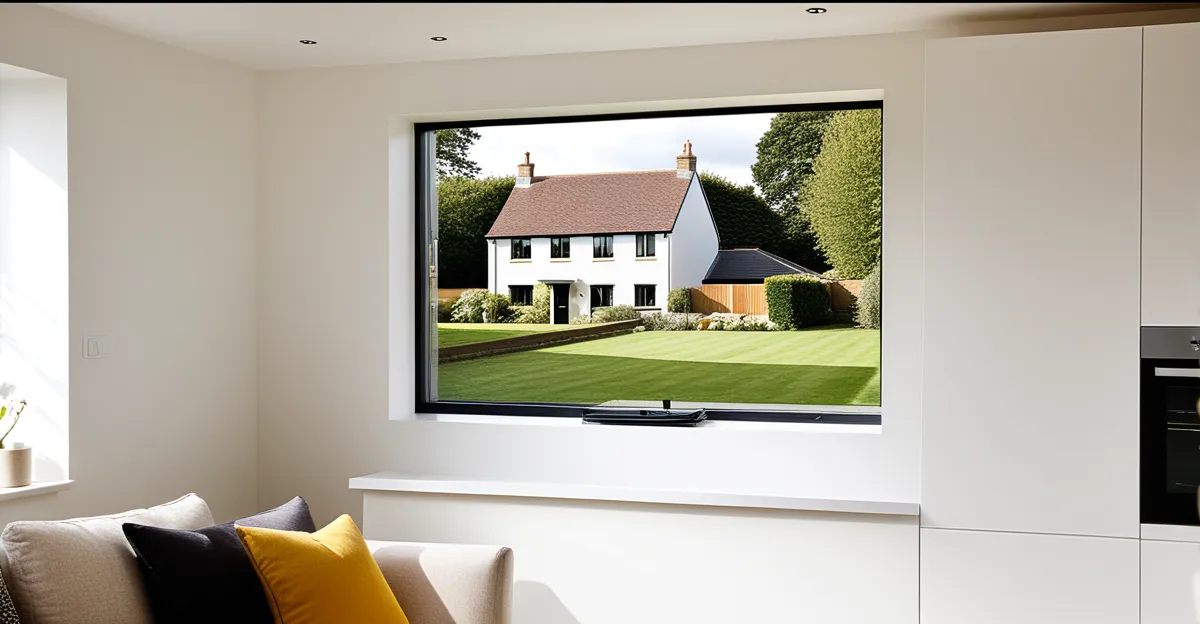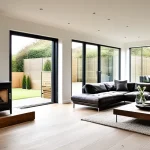Understanding Minimalist Design in the UK Context
Minimalist design focuses on simplicity and functionality, stripping spaces down to their essentials. In UK homes, this aesthetic aligns with a trend towards decluttering and spatial efficiency, which is crucial in dense urban environments. Minimalism in the UK is distinguished by its blend of tradition and modernity, influenced by cultural and architectural history.
The core principles include clean lines, open spaces, and a restrained use of decor. These features create a serene and clutter-free environment. Minimalist design in the UK often incorporates natural light, maximizing windows and open-plan layouts to enhance spatial awareness. Multifunctional furniture is also a staple in such settings, ensuring that every piece serves a purpose without overpowering the room’s simplicity.
Additional reading : How can you bring a touch of nature into your UK living room?
Cultural factors uniquely shape UK minimalist interiors, from the timeless allure of Georgian architecture to contemporary urban flats. Embracing minimalist principles doesn’t mean sacrificing character; instead, it highlights bespoke touches and respects the past while embracing the future. The UK’s cultural richness allows for a fusion where minimalist aesthetics coexist with local artistry, bringing warmth and individuality into homes.
Understanding these elements is essential for anyone looking to implement minimalist design in their UK residence. Each decision, from materials to furniture choices, reflects a dedication to efficient living and aesthetic harmony.
Also to discover : How Can You Infuse Your UK Home with Modern Elegance?
Materials and Textures in Minimalist Interiors
In minimalist design, especially within UK homes, the choice of materials and textures plays a crucial role in maintaining an aesthetic balance that complements simplicity while enhancing tactile interest. Popular materials often include natural elements like wood, stone, and glass. These materials not only contribute to a clean aesthetic but also echo the sustainable and eco-friendly preferences that are increasingly important within the UK context.
The balance between texture and simplicity is key in creating a minimalist interior. Textures should be subtly varied to add depth without overwhelming the space. For instance, using smooth woods alongside rough stone can create a contrasting dynamic that remains visually calm yet engaging. The aim is to choose elements that align with the minimalist ethos of ‘less is more’, allowing each component to stand out in its simplicity.
Sustainable choices are increasingly a priority for minimalist interiors in the UK. This sustainability movement encourages the use of recycled metals, locally-sourced timbers, and eco-friendly synthetics, which reduce environmental impact while providing unique aesthetic qualities. By integrating these options, homeowners can achieve a minimalist look that is not only visually appealing but also conscious of environmental resources.
Organization and Space Management Tips
Effectively managing space is crucial in minimalist design, especially in UK homes where space can be limited. A primary strategy for maintaining the clean look characteristic of minimalist interiors is through systematic decluttering. Begin by evaluating each room, deciding which items are essential, and removing or donating any surplus. This not only simplifies the living space but also enhances spatial awareness.
Innovative storage solutions are integral to a well-organized minimalist home. Consider furniture with built-in storage, such as ottomans or beds with drawers, to maintain order without sacrificing valuable floor area. Wall-mounted shelves and hidden compartments can also maximize capacity while adhering to simplicity.
Maximizing small spaces often requires creativity and strategic planning. Opt for vertical storage to utilize wall space efficiently, a common necessity in UK homes where floor space may be restricted. By incorporating these methods, minimalist design can be both practical and visually appealing, ensuring a harmonious balance between function and form.
Sourcing Minimalist Furniture and Decor in the UK
For those seeking to enhance their UK homes with minimalist design, identifying the right furniture and decor sources is essential. There are several reputable UK retailers known for offering quality minimalist furnishings, providing shoppers with a blend of functionality and style. These suppliers often focus on pieces that emphasize clean lines and simplicity, ensuring each item aligns with minimalist principles.
Local markets and online platforms are treasure troves for unique decor pieces that add a personal touch to minimalist settings. They offer an array of options, from vintage finds to contemporary designs, often crafted by independent designers. Engaging with these sources can help homeowners cultivate spaces that are both distinctive and harmonious.
Collaborating with local artisans offers another avenue for sourcing bespoke minimalist design elements. These collaborations allow for customization that reflects individual tastes while maintaining the understated elegance characteristic of the minimalist aesthetic. This approach not only supports local craftsmen but also infuses homes with a sense of authenticity and connection to the community.
By utilizing these diverse sources, homeowners can successfully furnish and decorate their spaces, staying true to the ethos of minimalist design while integrating elements reflective of their personal style and the rich cultural tapestry of the UK.
Examples of Minimalist Homes in the UK
Minimalist homes in the UK are often celebrated for their meticulous blend of form and function, providing ample design inspiration for residents and architects alike. These homes are hallmark examples of how intentional design principles can transform spaces to embody simplicity, elegance, and practicality.
One exemplary case is a Victorian townhouse in North London that underwent a transformative minimalist makeover. By embracing a neutral color palette—characteristic of minimalist aesthetics—the home exudes a sense of calm. This space is illustrative of how UK style can merge seamlessly with minimalist ideals, using historical features to add texture without complexity.
Moreover, loft-style apartments in urban centers such as Manchester and Bristol serve as case studies in maximizing small spaces while maintaining an airy, decluttered feel. The utilization of open plan layouts and multifunctional furniture in these homes underscores the importance of spatial awareness and flexibility in design. Natural light plays a pivotal role, with expansive windows serving as both a functional and aesthetic feature, ensuring that interiors remain light and inviting.
Through these visual examples, one can see how minimalist principles are applied to emphasize thoughtful design, proving that minimalist interiors need not compromise on character or warmth. These homes reflect a streamlined lifestyle that values quality over quantity, crafting environments that are as peaceful as they are functional.
Color Schemes for a Minimalist Home
The selection of a color palette is foundational in achieving a minimalist aesthetic, particularly in UK homes where simplicity and neutral tones harmonize with historical and contemporary surroundings. A classic minimalist colour scheme typically includes shades of white, grey, and beige. These neutral tones foster an illusion of space and help maintain a calm, unified environment, which is pivotal in minimalist design.
Incorporating UK-inspired hues into minimalist settings can add character while retaining a subdued atmosphere. Earthy tones and muted greens, reminiscent of the British countryside, seamlessly blend with minimalist principles. These colours introduce warmth and subtly connect interiors to the UK’s natural landscapes, adding layers of interest without overwhelming simplicity.
Colour plays a critical role in space perception and ambiance. Lighter hues reflect more light, enhancing brightness and creating a sense of openness in compact spaces—common in UK cities. On the other hand, strategic use of darker shades can add depth and cosiness to larger areas, maximizing the warm and inviting feel that minimalist spaces aim to achieve.
Key Features of Minimalist Design
In minimalist design, particularly within the context of UK homes, the significance of open spaces and decluttering cannot be overstated. These elements are crucial for promoting spatial awareness and creating an inviting atmosphere. Minimalist interiors focus on functionality, ensuring that each aspect of the design serves a purpose, aligning with the ethos of eliminating excess.
Natural light plays a pivotal role in enhancing the minimalist aesthetic. By maximizing windows and selecting light, airy materials, UK homeowners can amplify the perception of space, making rooms feel larger and more open. This emphasis on natural light also highlights simplicity, allowing the core design elements to stand out without unnecessary adornments.
Multifunctional furniture is a cornerstone of minimalist homes. In the UK, where space can often be limited, pieces that serve multiple purposes are invaluable. For instance, a sleek sofa with hidden storage or a table that converts into a desk demonstrates how functional aesthetics can be achieved. This approach not only optimizes space but maintains the uncluttered, serene environment characteristic of minimalist design.






